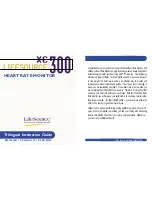
6
Components
Bottom Sensor
The bottom light sensor is located on the bottom-right of the display. It detects the light
intensity below the display.
Left-End Sensor (Optional)
The left-end sensor measures the internal temperature. The sensor transmits these
measurements to the CAN distribution board, and the VFC-3000 controller adjusts LED
intensity to protect the LEDs from overheating.
Door Detection (Optional)
The door sensors, if equipped, are built into the light detectors at the top of each door
opening. In addition to activating the light when the cabinet doors open, the sensors also
detect whether the doors are open or shut. This information routes to the mini CAN I/O
board, which monitors the status of the door sensors and reports it to the VFC-3000
controller.
2.8 Ventilation and Heater Systems
Intake Fans and Filters
Filtered intake fans mount to the lower rear of the display. The VFC-3000 controller analyzes
internal and external temperature readings from the temperature sensor network and adjusts
fan usage. A filter removes dust and debris from the incoming air to protect the internal
display components.
Heater Fans (Optional)
The heater fans mount to the bottom front of the display. The heater fans warm the front face
to prevent fogging. The VFC-3000 controller analyzes internal temperature readings from the
temperature sensor network and adjusts heater fan usage accordingly.
Fan RPM Sensors (Optional)
If your display has fan RPM sensors, a mini CAN I/O board for the RPM fans is installed on
the rear wall of the display.
With this option, each intake fan connects to an RPM sensor. The sensors monitor up to 2 fans
for failure. The fans fail if they do not revolve at 1,000 RPM. This information is then reported
to and displayed on the VFC-3000 controller.
2.9 Lights (Optional)
The fluorescent lights, if equipped, are located at the top of the display. Each door has a
sensor located at the top of the door opening. The sensors activate the lights when a door on
the display opens.













































